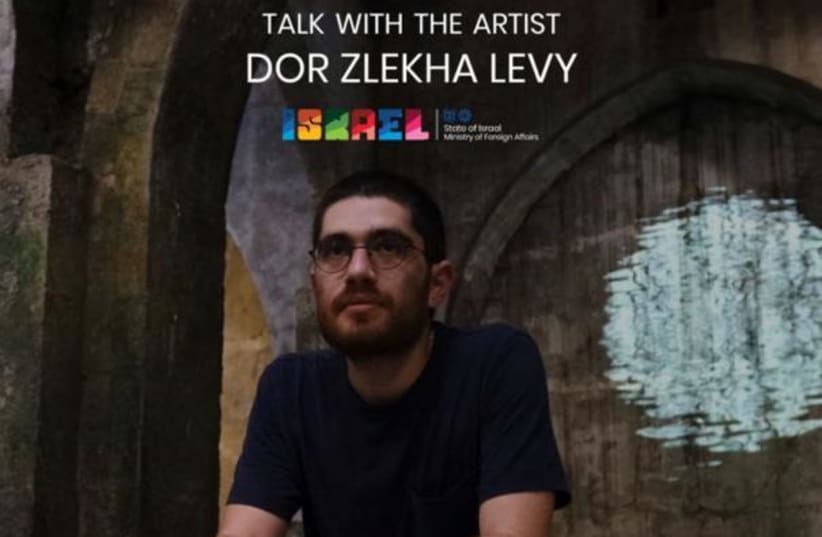Israeli multimedia artist Dor Zlekha Levy explored the intersection between arts, new media and storytelling in an exhibition at Paper Gallery in Prishtina, Kosovo.
The exhibit “Saltana,” organized with the support of the Embassy of Israel in Kosovo, ran between August and November.
It included five works by Zlekha Levy, focusing on the concept of exchanging cultural knowledge and storytelling with modern media in the art.
The installation “UMK/OMEK” (Hebrew and Arabic for “depth of the speech”) explored the relationship between the Arabic and Hebrew languages through the means of sounds.
“UMK/OMEK is a love song, written in two languages and sung in two languages together by the same singer,” the artist said in an interview with the local television KTV. “My work explores the similarities and the connection between the cultures and is presented here for the first time.”
The song was recorded in both languages, after which the Hebrew and Arabic tracks were separated. The individual tracks were played by two horn speakers placed 10-meters away from each other.
“I am curious to see how it connects to this place and to the people here,” he added. “If you listen well, you can hear the voice work process. For me, music and sound are part of research.”
The exhibition also included “Harb,” an audiovisual sequence based on footage shot in Israel during the most recent military operations. The installation explored the identity conflict presented in the original records, made by Jewish musicians who immigrated to Israel from Arab countries.
Another work, “Ayooni” (“My eyes” in Arabic) invited the viewers on a journey along the separation wall, though the lenses of a camera rolling by the fence in a horizontal movement, tracing after strips of posters hung on the wall of Arab villages and neighborhoods in the eastern part of Jerusalem.
The installation NOON presented an old recording of a blind Qanun (original string instrument) Virtuoso. In the work, the delicate sounds of the instrument were digitally processed to stimulate tones and frequencies similar to those of the Red Siren alarm, that Israelis often experience as a consequence of rocket attacks. The piece aimed to represent the blind Qanun player as a prophet, foreseeing the next war with his music.
For Director of Paper Gallery Gazmend Ejupi, the venue is fulfilling a mission to bring Kosovo to the international art scene.
“At the beginning, we had works by local artists,” he recalled, while speaking with KTV. “Then we started bringing in international artists for a reason, that is to bring the international art scene to Kosovo without facing the long waits for visas.”

